Where do they come from Alpacas are not wild; they are a South American camelid that has been domesticated for over 6000 years. They originate from the high Altiplano of Peru, Chile and Bolivia but adapt readily to our lower altitudes. They are closely related to the llama and fall into two breed standards.
Huacaya
The Huacaya has fibre growing vertically from its skin in small bundles with a tight crimped wave making the fleece sit off the skin like sheep, sometimes referred to as the “Teddy Bear” look.
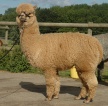
Suri
The Suri has a different appearance its fibre grows out of the skin in bundles/locks without any crimped wave; producing locks that twist and hang down along the back line of the alpaca. This gives an appearance much like a Wensleydale sheep. Also the ears are about 2 cm longer than the Huacaya.

Breeding pairs?
Alpacas are a herd animal and cannot be kept singly but are normally sold in pairs, either as a pair of non-breeding males or a pair of breeding females. It is not normal practice to sell alpacas as breeding pairs as this will limit the genetic capability in the coming years. As herd animals the more you can have the happier they are.

Offspring
Alpacas have only one offspring called cria per annum and the gestation period is 11.5 months, twins do occur but with a frequency of one in 50,000 births it is rare for both or even one to survive. We have been lucky enough to have one set of surviving twins. Giving birth is called ‘unpacking’. Alpacas instinctively give birth during the morning to early afternoon, this enables the cria to dry, stand and suckle before the temperature drops, they are normally up and about within half an hour and suckling after an hour, the mothers do not lick the babies when they are born they leave them to clean themselves on the grass, the need to survive is strong. Cria are weaned at about six months.
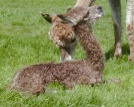
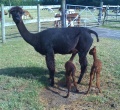
Stocking density
Alpacas can be kept at a stocking density of approximately 5-6 per acre depending on the quality of grazing and one must bear in mind that if breeding alpacas, additional paddocks will need to be made available at weaning and to separate the growing males from the females.

Shelter
Field shelters should be made available, although they probably won’t use them you feel better when it is raining and you know they can get into the dry. If you make a pen off the shelter and feed in it every day it makes it very easy if you need to contain them for routine tasks.

Fencing
Alpacas can jump but rarely want to escape from the herd; normal stock fencing and bullock hurdles of about 4 ft are sufficient, please do not use barbed wire.

Feed
Alpacas eat grass and hay which should be made available all year although not much is eaten in the summer. Grass is supplemented with Alpaca Nuts and a coarse mix (readily available from Alpaca Care Ltd.) to make sure that they are getting all of the minerals and vitamins needed with protein, but be warned alpacas are lean and very efficient grazers which will get fat on to much concentrate.
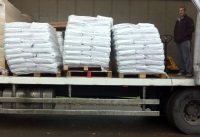
Husbandry
Alpaca’s feet consist of a double soft pad and two toe nails that need to be kept trimmed as our pastures do not wear them down, this is done on an ad-hoc basis. Their teeth grow and need grinding down so that they are able to graze properly the males also grow fighting teeth at approx. 2 years and these need to be removed, both of these tasks can be carried out at shearing when the animal is restrained. Alpacas are vaccinated for clostridial diseases; we do this once a year. Alpacas are wormed regularly on a six-month basis. They should be given a mineral paste through the winter months and cria need to be given an additional ADE supplement to compensate for lack of sunlight. You should body score (feeling the frame to make sure it is not getting too fat or losing weight) regularly, their thick fleece hides what is going on underneath.

Shearing
Alpacas are sheared annually and produce an average of about 3.5kgof fine saddle fibre , although genetically the alpaca has the potential of up to 6kg. They are normally sheared between May and June and at this time routine husbandry tasks are also carried out i.e., teeth, injections, toe trimming etc, a bit like a full service.
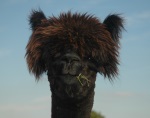
Colours
There are 22 officially recognised colours of alpacas and every shade in between. In the UK we have been working towards breeding consistently solid one-colour alpacas.
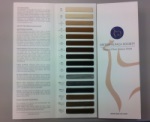
Fibre / Fleece
Alpacas produce a luxury fibre akin to cashmere but harder wearing. The alpaca fibre industry in the UK is in its infancy, however we are now seeing numerous private and cooperative initiatives as breeders work together to add value to this unique product. Crafts such as felt making, spinning and weaving are starting to see the advantages of alpaca fleeces, larger mills are setting up to deal in quantities as low as20kg and as a result quality UK alpaca products are coming onto market.
Transport
Alpacas travel well in a horsebox or livestock trailer as long as they have the ability to stand, although they will normally sit whilst the vehicle is in motion. During a long journey we would recommend a stop every 2 hours to allow them to stand to relieve themselves or to feed their offspring.

How do I find out more?
If you want to visit our farm, see our herd and generally find out more about these lovely creatures give Graham a ring on 07802-263589,there is no obligation, we need to know that you are sure about your commitment, but be warned these animals are seriously addictive.
